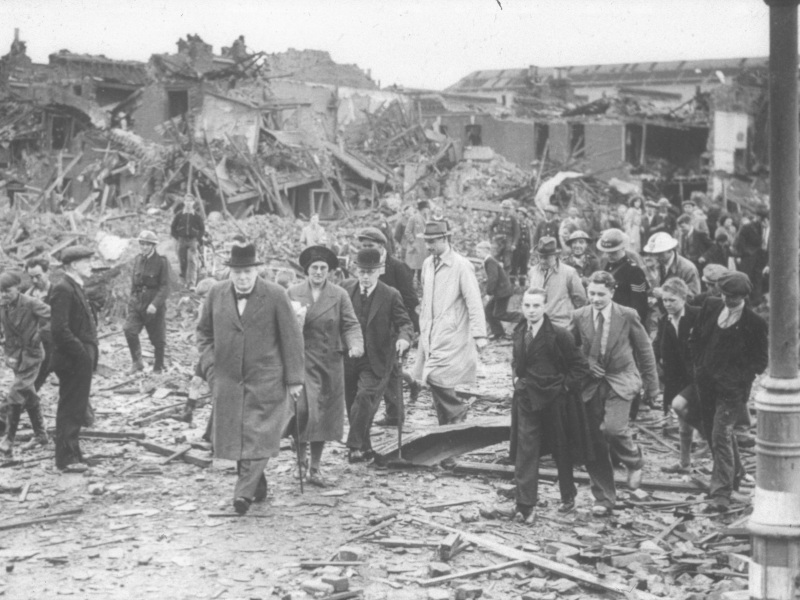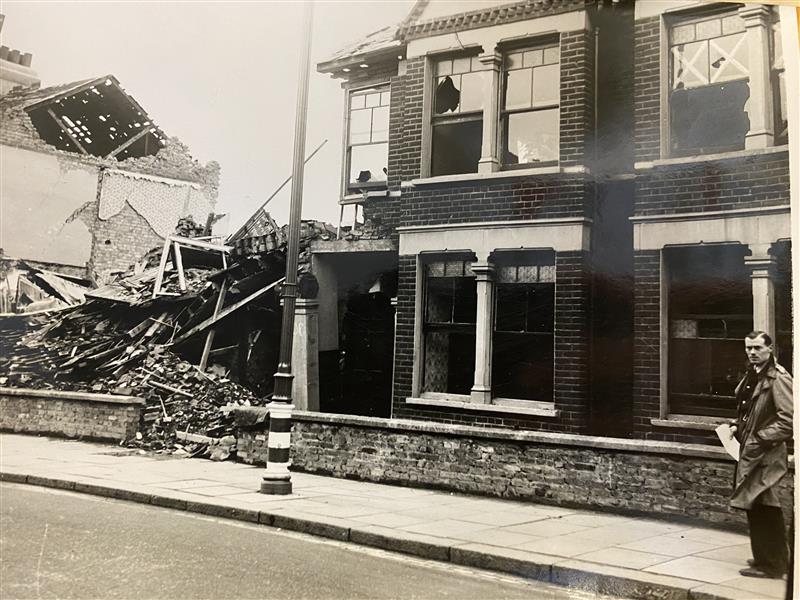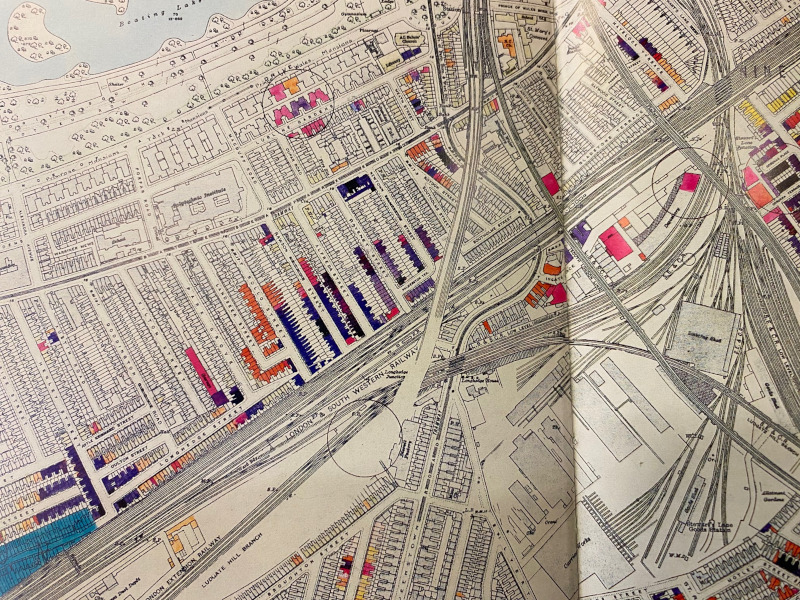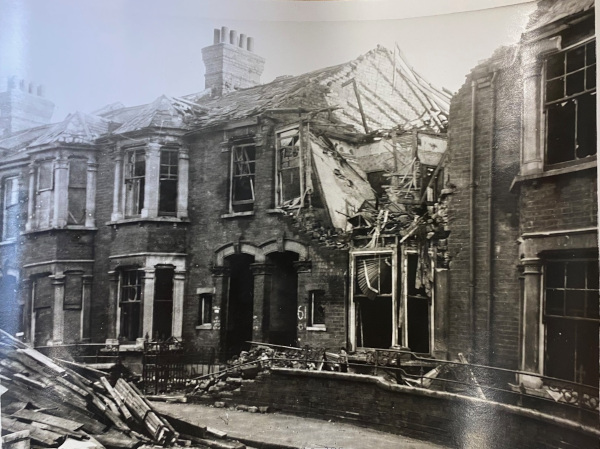WWII stories: A precarious life in Wandsworth

Churchill visits Nine Elms in 1940. Image credit: Wandsworth Heritage Service
Take a walk through the streets of Wandsworth and the landscape tells its own story of the brutality of the Second World War.
Terraces infilled with 1970s homes mark the places scarred by enemy fire, while memorials borough-wide commemorate the military and civilian residents who lost their lives.
Wandsworth was heavily targeted because of its industry and infrastructure – Clapham Junction, Battersea, Balham and Tooting were just some of the areas badly affected.
Air strikes cause devastation
Prime Minister of the time Winston Churchill saw first-hand the devastation caused by air strikes during a visit to Nine Elms in 1940, while historical maps created by the London County Council pinpoint each site hit during the war.
Archivist Emma Anthony, of Wandsworth Heritage Service, explains: "We know from the records we have here and the family historians who have researched their ancestors that life in our borough during WWII was precarious."
Hear more on Wandsworth's WWII history
Emma continues: "Imagine waking up to find a landscape you had lived with your whole life had become unrecognisable. This matters less than losing a loved one or a limb, but it is still part of an individual’s cultural and personal landscape, and it does matter.
"In reality, it took years for the rubble to be cleared, and locals tell me they and their friends played in rubble as children into the 1960s.
"I wonder how it felt for their parents living among the scars of the war they had survived, how they coped walking past the sites where they’d lost friends and family – whether they averted their eyes. Perhaps for some it was a relief when these sites were built over, for others a fear that their loss had been forgotten."

Image credit: Wandsworth Heritage Service
Local history uncovered
The realities of the Second World War have been explored and documented by Wandsworth’s local historians over the years.
This year marks a decade since a Wandsworth Council Green Plaque was unveiled at Hazelhurst Road in Tooting, where at least 35 people were killed and more than 100 injured in a V2 rocket strike in 1944.
Among those who campaigned for the plaque was local historian Geoff Simmons, who shares his knowledge of the area’s bomb sites, air raid shelters and evacuee routes with children and adults around the borough.
“Last year was the 80th anniversary of the V1 bombing campaign and it seems like there has been one anniversary after another,” highlights Geoff, who runs the Summerstown182 website.
“This anniversary feels especially poignant because people with any memory of the Second World War are now very old and it’s so important to preserve these memories.”

Clapham Junction Station bomb strikes. Image credit: LCC Bomb Damage Maps 1939-1945
At Christchurch Gardens in Battersea, 500 daffodils planted by local schoolchildren in 2018 bloom each spring in memory of those killed in the area during the war.
The planting scheme was part of the War Comes Home project, which highlights the stories of those who grew up in wartime Battersea and their families.
One of the creators of the War Comes Home project is Carol Rahn, who points out the stress and anguish of the constant attacks for terrified residents.
“The bombing seared itself into the memory of even very young children and sights or sounds they associated with being bombed were still traumatic all these years later,” she explains.
As we commemorate the end of WWII in Europe, we have gathered some of the stories of those who remember that pivotal era.
From a Putney-based female gunner who served in the Auxiliary Territorial Service after her brother’s death at Dunkirk, to the incredible survival of a tortoise found on a bombsite in Tooting, these experiences spotlight life in WWII.
Discover more Second World War stories.

Bomb damage in Balham. Image credit: Wandsworth Heritage Service